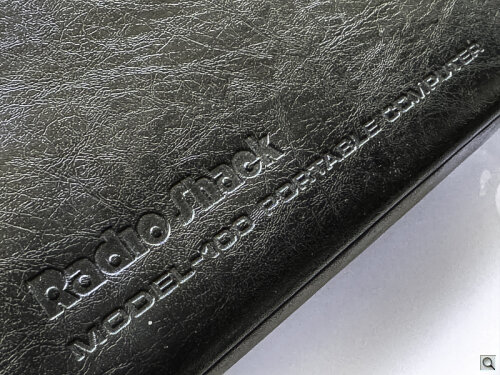Photo Corners headlinesarchivemikepasini.com
![]()
A S C R A P B O O K O F S O L U T I O N S F O R T H E P H O T O G R A P H E R
![]()
Enhancing the enjoyment of taking pictures with news that matters, features that entertain and images that delight. Published frequently.
Friday Slide Show: The Model 100



5 July 2024
The last thing we salvaged from the family home, it turns out, is Dad's Model 100. He bought it in 1983 after seeing it at the West Coast Computer Faire at Moscone Center.
We'd just introduced personal computing to our weekly publication with a DEC Rainbow. It was going to schedule and bill advertising, compile our annual statistical review of all premiums and losses by insurers in California and transmit copy over a modem to our Compugraphic MCS typesetting system.
We had no idea how, but we bought the hardware and the software we needed to make it happen.
The editorial staff was using typewriters whose output (sheets of paper) were scanned on a Dest scanner into the typesetting system. With manual markup that was filtered out by the scanner's lamp. Which was fine at the office but what about on the road?
But really it came with everything you needed as a journalist.
Enter the Model 100 with its acoustic modem that coupled to a hotel handset to transmit text stored in the machine at 300 baud. The unit booted instantly from firmware to provide access to the BASIC programming language, a TEXT word processor, a TELCOM program to transmit files over the modem, an ADDRSS book and a SCHEDL program.
Four AA batteries could power it all day. Or you could plug in a power adapter.
The keyboard had a great feel, actually, and the unit could hold a lengthy story displayed in eight 40-character lines at a time. Large characters, too. You could load a commercial BASIC program from tape to enhance its word processing capabilities. But really it came with everything you needed as a journalist.
And that's who bought it, making it the first commercially successful notebook computer.
We owned one too. And still have it. And bought the Waite Group's series of books about it.
It had both a Centronics port to connect a printer and an RS-232 port (the fore-runner of USB) for other peripherals. Its native BASIC let it perform magic tricks. We haven't bought a computer we couldn't program since then.
What it didn't have, and what would doom any similar device today, was wireless connectivity to the Internet.
Otherwise it was, in fact, an unmatched achievement in portability, usability and software. It got out of the way and let you get on with it.
Even today, that's rare.
Which, we suppose, is why we still keep ours around and couldn't dispose of Dad's.
After all, with four batteries in it, it still works. Forty-one years later.
